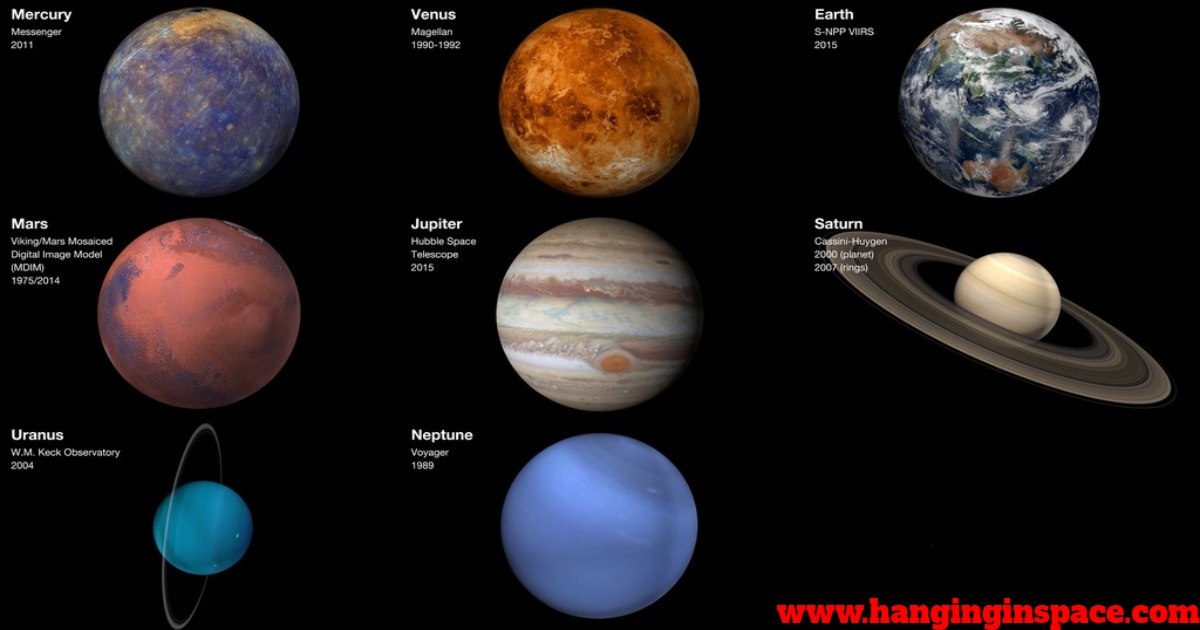We will briefly discuss the colors of the planets, dwarf planets, moons, asteroids, comets, and the Sun of our solar system and what is the reason behind their colors.
Colors of the Planets of our Solar System:
Mercury has a Greyish-brown color.
Venus has a Yellow-ish white color.
Earth has a Blue color.
Mars has a Red color.
Jupiter has Swirling colors (mostly brown, red, and white).
Saturn has Pastel colors (mostly yellow and brown).
Uranus has a Blue-green color.
Neptune has a Deep blue color.

What is the Reason behind Planets’ Colors?
Sunlight’s interaction with a planet’s atmosphere and surface dictates its color. Let’s explore the science behind each planet’s unique hue:
Mercury: Grayish-brown (almost no atmosphere, reflects rock/dust color)
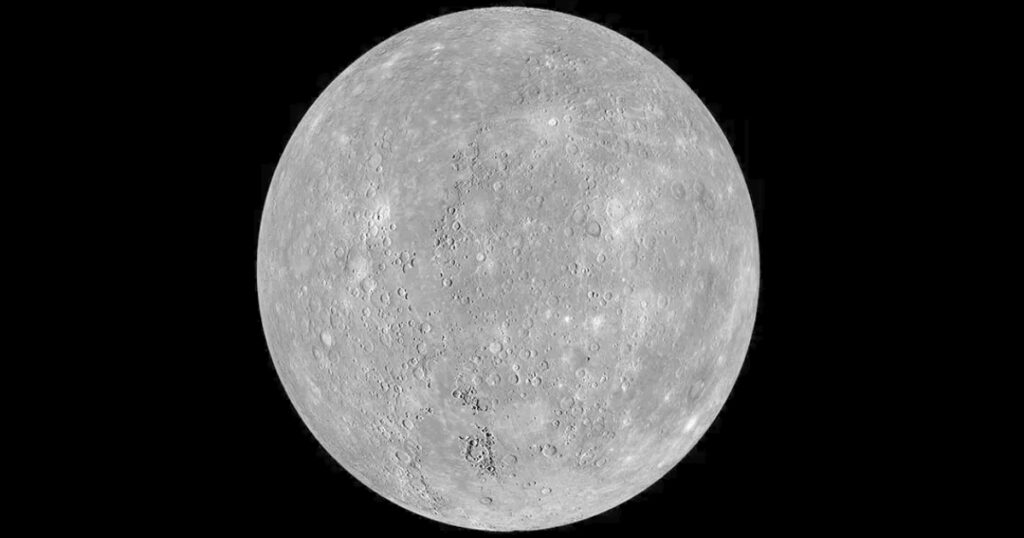
Which color is Mercury and why? Unlike most planets, Mercury appears grayish-brown because it has almost no atmosphere. Sunlight strikes the bare, rocky surface directly, reflecting the gray tones of the rocks and dust.
Venus: Pale Yellow-ish white (thick atmosphere filters sunlight)
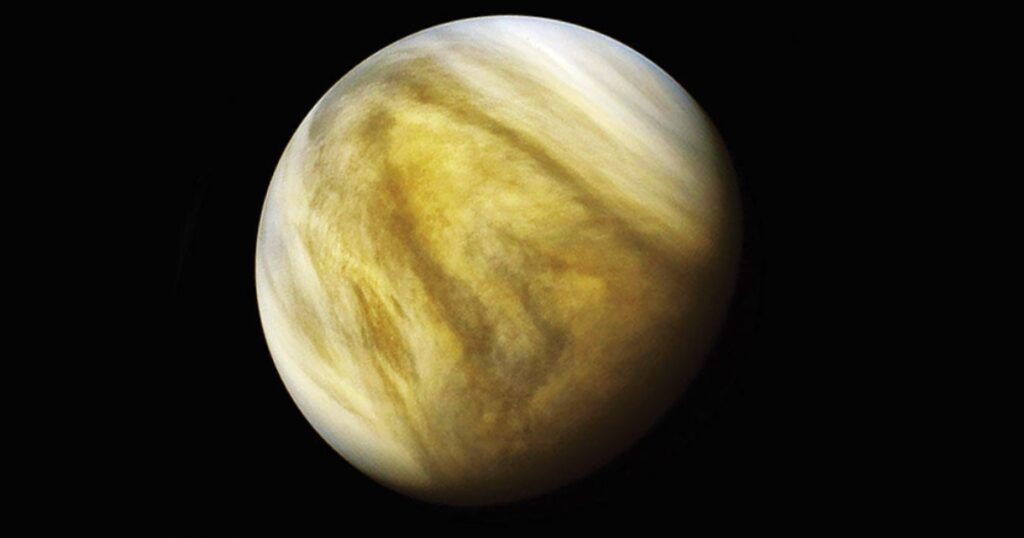
Which color is Venus and why? Venus is perpetually cloaked in a thick atmosphere of carbon dioxide and sulfuric acid clouds. This dense layer acts like a giant filter, scattering and absorbing much of the sunlight. The leftover light that reaches us gives Venus a pale yellow-ish white appearance.
Earth: Blue (oceans scatter blue light)
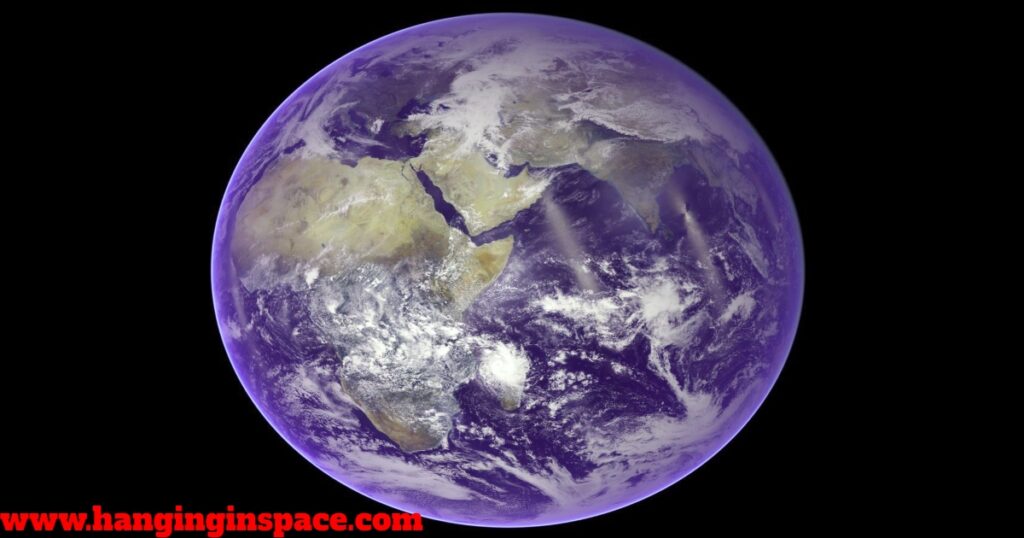
Which color is Earth and why? Our home planet is a stunning blue marble due to its abundant water oceans. When sunlight falls on Earth, the blue wavelengths are preferentially scattered by water molecules in the atmosphere, creating the dominant blue color we see from space.
White clouds also play a role, reflecting all colors of light and adding a touch of brightness.
Mars: Red (iron oxide on the surface, like rust)
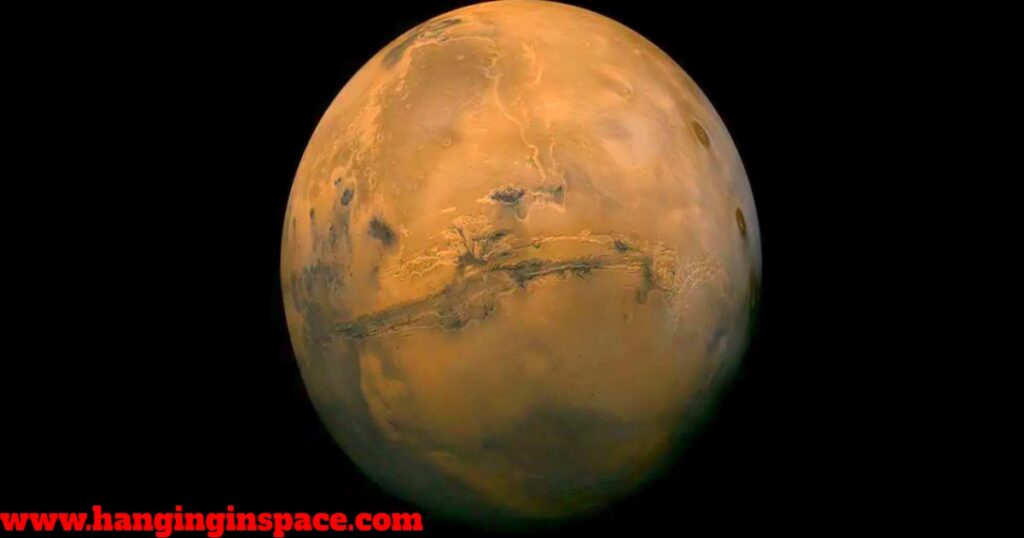
Which color is Mars and why? The rusty red color of Mars is a result of iron oxide, commonly known as rust, coating its surface. This iron oxide gives the Martian landscape its characteristic reddish hue.
Jupiter: Mostly Brown, Red, White (due to gases and interaction with sunlight)

Which color is Jupiter and why? Jupiter, the solar system’s largest planet, is a mesmerizing giant adorned with swirling bands of color. Its atmosphere, primarily composed of hydrogen and helium, might seem simple, but trace amounts of ammonia and methane create a spectacular light show. Sunlight interacts with these gases in fascinating ways.
Ammonia crystals, for example, reflect red light and allow blue and white light to pass through more readily. This contributes to the prominent white ovals and brown and red belts we see on Jupiter. The iconic Great Red Spot, a giant anticyclonic storm, is another colorful feature, its reddish hue is potentially caused by complex interactions between atmospheric gases.
Saturn: Mostly Yellow and Brown (due to ammonia crystals scattering sunlight)

Which color is Saturn and why? Similar to Jupiter, Saturn is a gas giant with a hydrogen-helium-dominated atmosphere. However, Saturn’s color scheme is distinctly different. Instead of vibrant reds and browns, Saturn showcases a palette of soft pastels.
This is because ammonia gas in Saturn condenses into ice crystals, which scatter sunlight differently than the ammonia crystals on Jupiter. The varied sizes and shapes of these ice crystals create the beautiful pastel yellows and browns that grace Saturn’s swirling cloud bands.
Uranus: Blue-green (methane gas absorbs red light)

Which color is Uranus and why? Unlike Jupiter and Saturn, Uranus and Neptune are classified as ice giants. Their atmospheres contain higher proportions of water, methane, and ammonia compared to the gas giants. Uranus, with its distinctive blue-green hue, is a prime example.
The presence of methane gas plays a key role in Uranus’s color. Methane gas strongly absorbs red light from the Sun, allowing the blue and green wavelengths to pass through more easily. This is similar to how Earth’s atmosphere scatters sunlight, giving us our blue sky.
However, unlike Earth, Uranus has a deeper blue-green color, potentially due to additional atmospheric components or Rayleigh scattering (the scattering of light by particles much smaller than the wavelength of light).
Neptune: Deep blue (methane gas and potentially H₂S absorb more red light)

Which color is Neptune and why? Neptune, the farthest gas giant from the Sun, boasts a captivating deep blue color, even more pronounced than Uranus. The reason for this intense blue hue lies in the abundance of methane gas in Neptune’s atmosphere, similar to Uranus.
However, Neptune might also have traces of hydrogen sulfide gas, which absorbs even more red light than methane. This additional absorption contributes to Neptune’s appearance as the deepest blue planet in our solar system.
Colors of the Dwarf Planets of our Solar System:
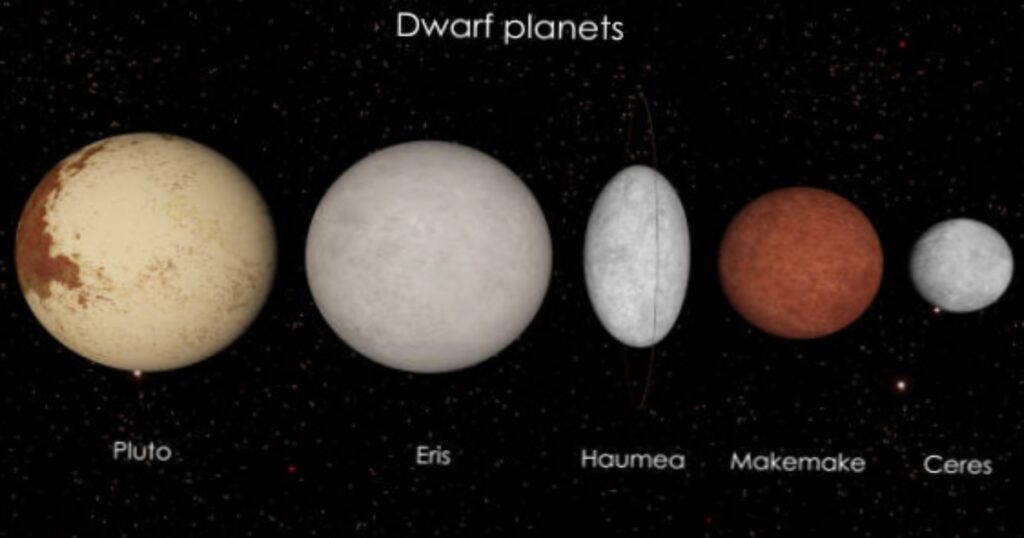
Dwarf planets are typically smaller icy bodies with thinner atmospheres or no atmospheres at all. Their color likely comes mainly from reflecting sunlight off their surfaces, which can be a mix of rock, ice, and dust.
However, there are some clues:
Color of Pluto: A surprisingly colorful world with reddish-brown plains, bright white mountains of frozen nitrogen ice, and dark spotted areas.
Color of Eris: Might have a reddish tint due to organic molecules on its icy surface.
Color of Ceres: Likely has a dark grey or brown color based on observations.
Color of Haumea: Might have a reddish brown color due to organic materials on its icy surface.
Color of Makemake: Appears reddish like Pluto, possibly due to similar organic compounds.
Colors of the Moons of our Solar System:
Color of Moon (Earth): Light Grey and Brown – This results from the dominant rock and dust on its surface.
Color of Moon Mimas (Saturn): White – This moon is mostly water ice, giving it a bright white appearance.
Color of Moon Phobos (Mars): Brownish-Grey – Phobos is a small, potato-shaped moon with a surface rich in iron oxide (rust), hence the brownish hue.
Color of Moon Io (Jupiter): Yellow-Orange-Red – This volcanic moon stands out with its dramatic coloring. Io’s active volcanoes spew sulfur compounds, creating a yellowish base with red and orange highlights.
Color of Moon Titan (Saturn): Orange Atmosphere (likely icy surface) – Titan boasts a thick, hazy atmosphere with an orange tinge. The surface itself is likely icy, but obscured by the atmosphere.
Color of Moon Enceladus (Saturn): White – Enceladus is another icy moon, covered in reflective water ice. It’s also known for its icy plumes erupting from the surface, adding to its bright white appearance.
Colors of the Asteroids and Comets:
Asteroid colors vary based on composition (rocky: brown/grey, metallic: shiny).
Comet colors appear fuzzy white with tails due to dust and gas.
Color of The Sun:
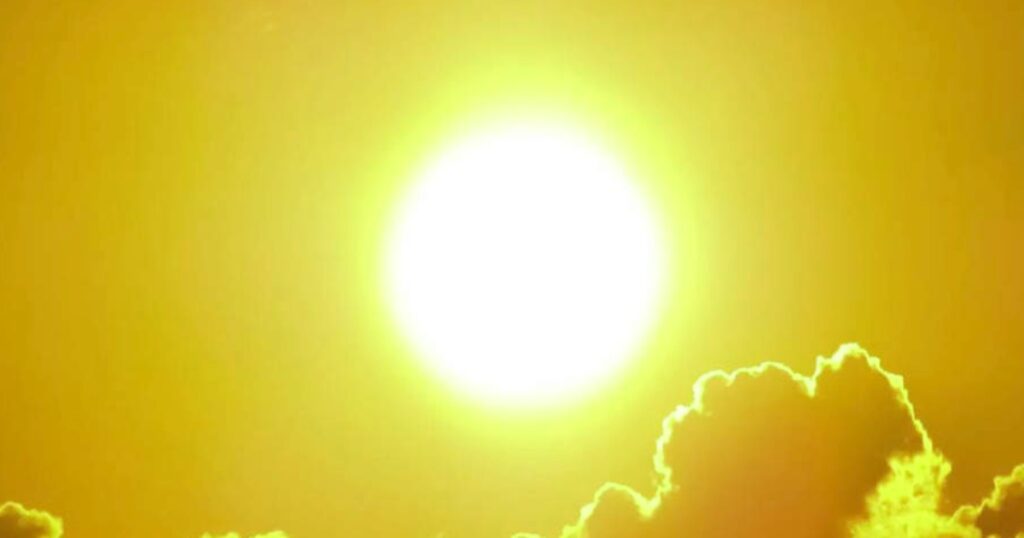
Which color is the Sun and why? The true color of the Sun is White which is the mixture of all wavelengths of the visible spectrum (red, orange, yellow, green, blue, indigo, and violet).
When sunlight enters Earth’s atmosphere, it interacts with the gas molecules, particularly the ones in the lower layers. These molecules scatter the sunlight more efficiently for shorter wavelengths (like blue and violet) compared to longer wavelengths (like red and yellow).
As the scattered blue and violet light travels through the atmosphere, it gets redirected in various directions, sometimes reaching our eyes indirectly.
This is why the sky appears blue. On the other hand, the less scattered longer wavelengths (yellow, orange, and red) tend to travel more directly toward us. Therefore, when we look at the Sun, we perceive a dominance of yellow light, which is why the Sun appears Yellow.
Conclusion:
Our solar system is a full-on cosmic light show. From the vibrant blues and greens of Neptune to the swirling reds and yellows of Jupiter, each world has a unique hue thanks to sunlight’s playful effect on atmospheres and surfaces.
Even rocky worlds like Mars sport a rusty charm, while icy giants wear a cool blue coat. Our celestial neighborhood is a breathtaking display of color and wonder, waiting to be explored.
